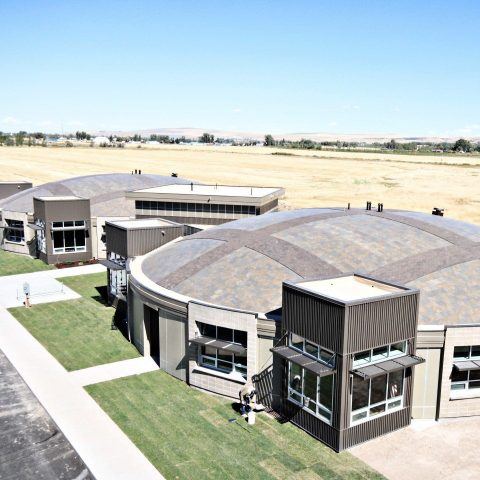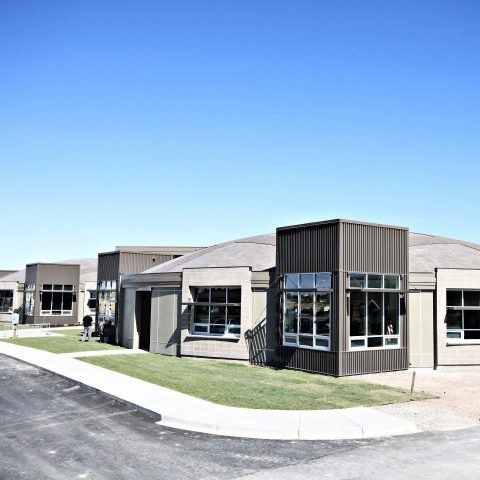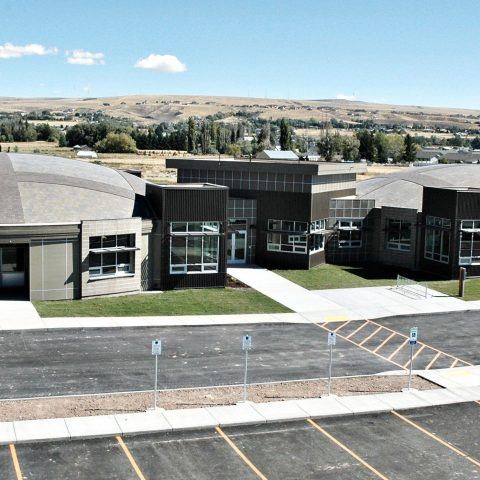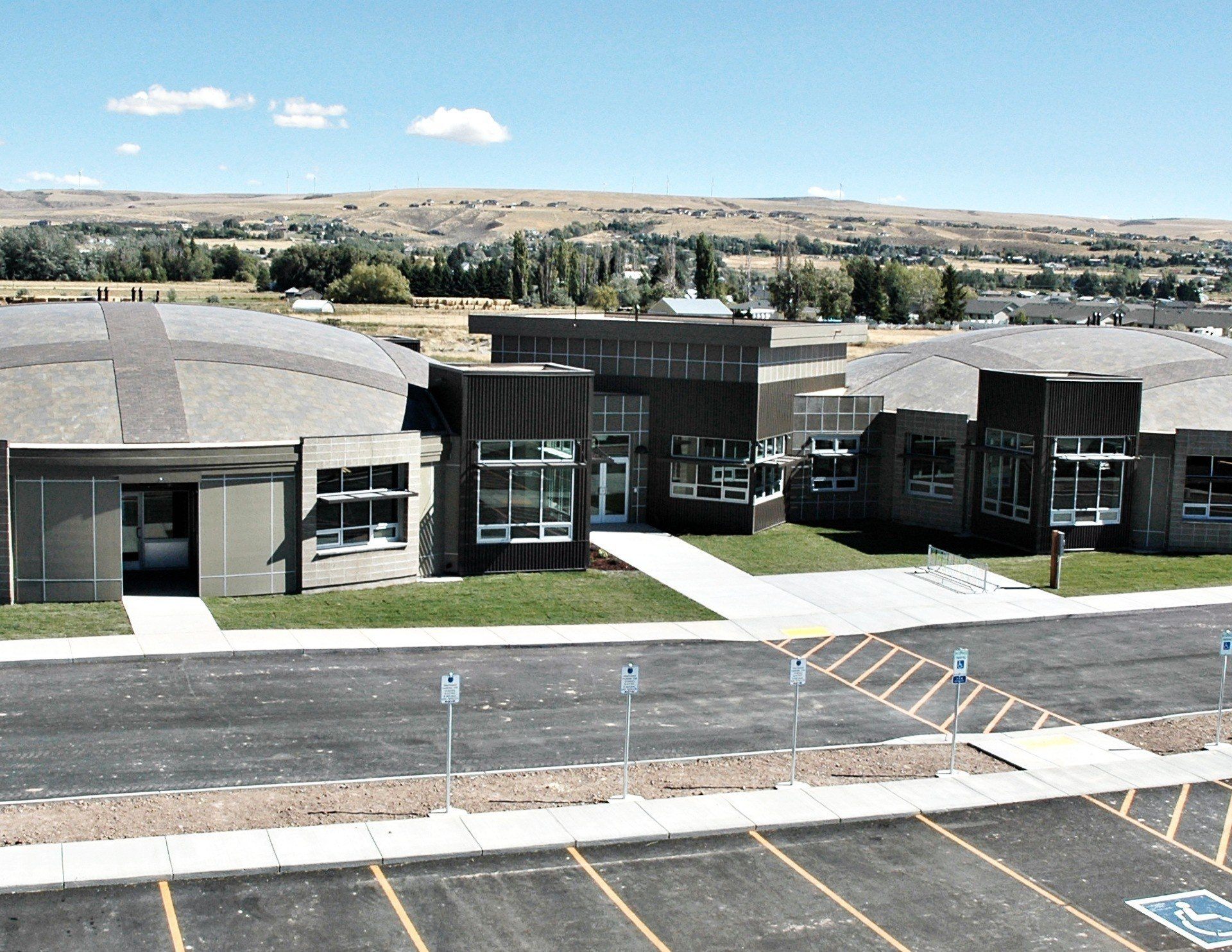Scope of Work
| Domes | Height | Diameter | |
|---|---|---|---|
| *Stem Wall | |||
| #515 | 12ft + 12ft* | 91ft | |
| #515 | 3.7m + 3.7m* | 27.7m | |
| #516 | 12ft + 12ft* | 91ft | |
| #516 | 3.7m + 3.7m* | 27.7m | |
Educator David Meyer had a dream of creating Idaho’s first Montessori charter school—if he could just figure out where to house it.
But when Daren Wheeler of Dome Technology heard of Meyer’s plight, the solution seemed simple. “Charter schools have a hard time getting buildings because of funding,” said Wheeler. “We came up with the idea, ‘Why don’t we build the school and lease it to them?’”
After gaining state approval for the Monticello Montessori School plan, construction could begin. The catch was that the school had to be built in 144 days—ready just in time for the first day of school. One hundred and ninety-two students were counting on it.
Innovation was key when planning the school, and since domes require no interior structural walls, administrators can reconfigure and reimagine the space at will without major structural changes. Electrical upgrades can also easily be made.
The school would carry lower utility costs; case studies suggest that domes are 30 to 40 percent more energy efficient than traditional construction and require less equipment and utility costs for heating and cooling, Wheeler said.
Because the domes are built atop 10-foot insulated concrete-form walls, there was plenty of room to install a host of windows—one of the school’s best features, said school business manager Nari Mendenhall. “Everyone complements us about the windows and how each room just feels more open than it actually is because of all the windows. It’s nice because you don’t feel boxed in,” she said.
Also, Monticello’s modular design allows for the school to grow. “At some point if the board chooses to, it’s very easy to add onto and build more domes and create additional space,” Meyer said.
Though built quickly, the school was built to last. Geometry renders domes resistant to harsh whether, including high wind speeds and external moisture. The school’s domes are covered in waterproofing membranes under a tile layer that should last in excess of 100 years.
“With Dome Technology we were able to design a custom building, a learning space filled with light, with extra square footage so the kids didn’t feel crowded. The construction is a good use of public funds because it’s solid, and it’s going to last,” Meyer said.





